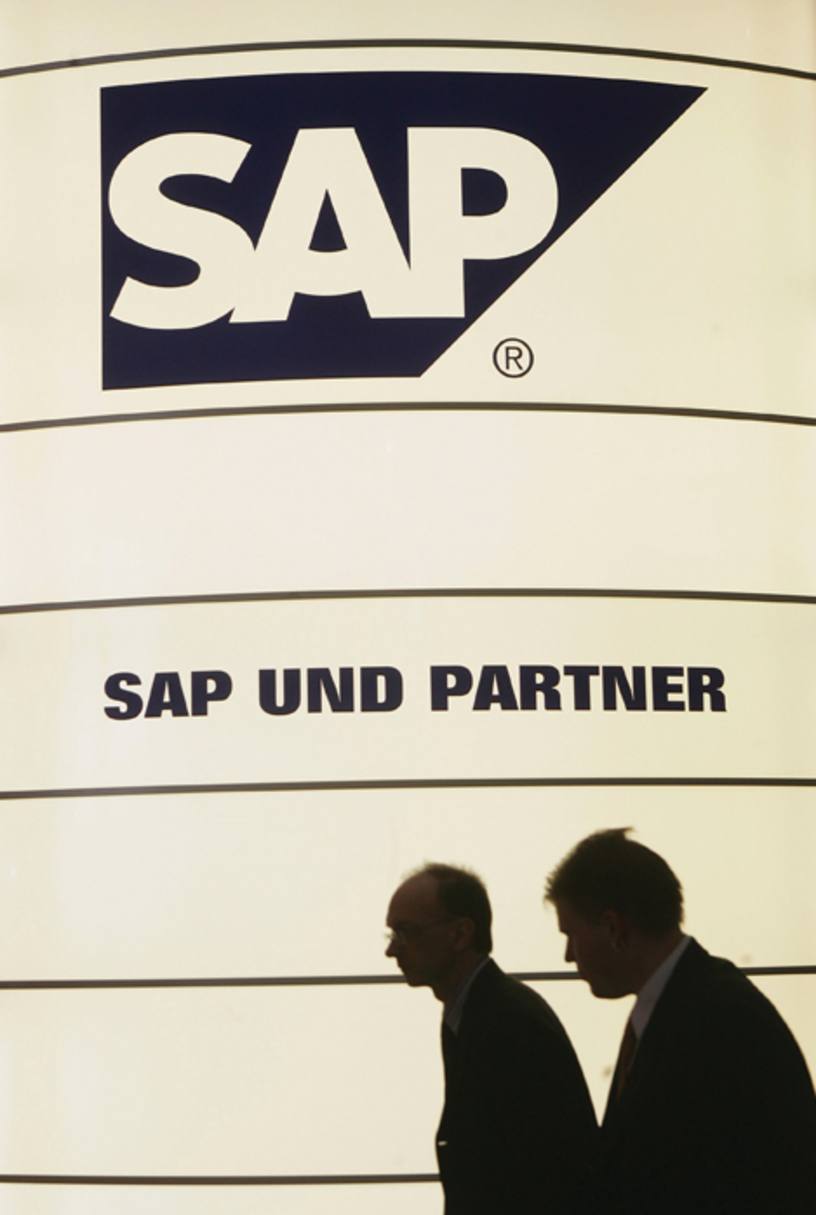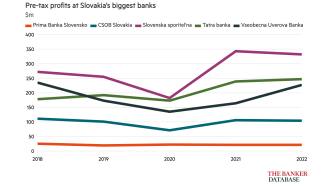At last year’s Sibos conference, technology provider SAP unveiled its Financial Services Network (FSN), a cloud connection for both banks and corporates that allows payment transfers and messaging. Some large banks have already joined, advocating its easier and faster connectivity, transaction automation, better payment reconciliation and enhanced treasury visibility.
FSN works with different systems, including Enterprise Resource Planning (ERP), treasury management and payroll. ERP – a company accounts system where all financial business is monitored and conducted – is usually used alongside treasury management systems for corporate transaction banking business.
The main aim of FSN is to offer value-added services and not to just solve connectivity problems, says Sanjay Chikarmane, senior vice-president and general manager of global technology solutions at SAP. “There are [such] solutions out there already. Corporates do not just want a connection pipe, and neither do banks. They want more. FSN will be a three-way relationship. Banks and corporates retain their direct relationship, and FSN will facilitate the services that make up these financial relationships. We work [with] mutual customers of the banks and SAP. They’re located in each of the regions that SAP and the bank operates – the US, Europe, Asia-Pacific and Latin America,” says Mr Chikarmane.
Business potential
SAP is not the first to realise business potential in this complex corporate-to-bank territory. The Society for Worldwide Interbank Financial Telecommunication (Swift) also has its eyes on the prize. “[SAP is] trying to succeed where Swift has failed,” says Rik Turner, senior analyst at technology analyst Ovum.
But Swift is by no means out of the competition. It has added corporates to its focus and it too offers cloud connectivity, besides other options. And thanks to being bank-owned, it too has the backing of banks. Swift’s head of corporate and supply chain markets, André Casterman, says: “Until now, connectivity was our focus, but now our approach over the past two to three years has been to enable banks to develop enhanced services over any channel. Our approach now is to act as a gateway between bank and corporate for the exchange of business flows on the cloud. The focus is on the secure delivery of a message.”
Although both SAP and Swift maintain they will not go head to head, their paths are certainly crossing. While SAP is extending its strength in corporate-to-corporate (C2C) to corporate-to-bank (C2B) connectivity, Swift is extending its expertise in bank-to-bank (B2B) to C2B connectivity.
David Watson, head of client access, global transaction banking, at Deutsche Bank describes these developments as co-operative competition, or "co-opetition". “FSN is not instead of, but in addition to, proprietary and Swift connection. We will always work with clients on proprietary products as there is always a place for specific products and services. In parallel, we work with other banks and industry bodies on product developments,” he says. “SAP took time to speak to banks and corporates to understand existing market concerns, and identified an opportunity to help improve multibanking connectivity for SAP ERP corporates.”
These concerns include the connection’s technical complexity, as both banks and corporates have several bank relationships that require various connections, as well as the time and cost in onboarding clients. “The focus for corporates is to streamline their connectivity to different counterparties, including banks, and so reduce risk,” says Tom Durkin, managing director, global head of integrated channels, at Bank of America-Merrill Lynch. 'Risk' applies to the technology interfaces: by having just one connection, there will be a reduction in the potential points of failure. Corporates are not live on the network yet, but Mr Durkin expects awareness of the network to increase over the next conference season. Mr Chikarmane says joint announcements with banks and corporates will be made in the coming months.
Global brand
Certainly, FSN members and analysts think SAP’s success will lie in its ERP systems strength. “You could walk into a supermarket in Idaho and the IT manager would know about SAP. It is the single example of a globally successful European IT provider; one that has cracked the US market,” says Mr Turner. “When ERP systems were being established in the late 1980s and early 1990s, SAP got into the market quickly.”
But according to 'Market Share Analysis: ERP Software, Worldwide, 2012', a report by IT research firm Gartner, the market grew by just 2.2% in 2012. SAP had by far the largest ERP market share with 24.6%, followed by Oracle with 12.8%. Conversely, Gartner’s projections for on-demand ERP systems – common in cloud networks – are more encouraging: revenues are forecast to rise from 12% worldwide in 2013 to 17% in 2017.
As such, Mr Turner believes SAP and Oracle, with their strong footprint in ERP systems, are now looking for new business streams beyond ERP.
FSN is “a logical extension of the core SAP platform”, says Hubert JP Jolly, managing director for channel and enterprise services at Citi Treasury and Trade Solutions. Rather than having to procure and implement additional third-party software, the client will simply extend its contracted services from SAP and integrate its banking partners.
While these developments highlight the efforts of banks and SAP, Peter Matza, engagement director at the UK Association of Corporate Treasurers, says: “Systems providers, whether banks or technology vendors, may say they have standardised platforms, but if the corporate treasurer already uses other systems, from another provider or in-house, these systems may not talk to each other easily.” This is because in many organisations, ERP systems are separate from treasury management systems.
But Mr Jolly says the objective of FSN is to provide a holistic service to SAP users that need to be integrated with multiple banking partners. “The SAP FSN will facilitate the extraction of payment data from the client’s ERP system, transform it in the cloud into bank-specific formats and distribute the payment files to the various banks. In return, FSN will also accept status and account statement messages from the banks and will assist the client with its reconciliation process,” he says. “This is different from other solutions as it offers all required efforts – data extraction, data transformation and data distribution – as part of a single service.”
This means corporates do not need to move all their systems to SAP to join FSN, says Mr Chikarmane. “Corporates can have a combination of SAP and non-SAP systems. Partner offerings that can add value to our customers can plug in as a value-added service.”
Broad appeal
FSN’s appeal to banks is evident from its current membership, which includes Bank of America-Merrill Lynch, Citi, Deutsche Bank, Nordea, RBS and Standard Chartered. They are already connected, with the connections tested and active. When a corporate joins, it just has to construct and test the connection to the cloud and will then have access to the cloud.
“For banks, having a multibanking platform that supports zero-footprint and rapid connectivity deployment significantly levels the playing field, allowing for greater market competition. This essentially means banks need to listen closely to their corporates and innovate beyond payments processing, and build new value-added services that differentiate them from their competitors,” says Gautam Jain, global head of client access, transaction banking at Standard Chartered.
Examples of value-added services could be procurement and remittance information, according to FSN members. Through Ariba, a cloud-based trading network where companies can connect, Mr Chikarmane says SAP has access to 900,000 suppliers and their master data, which can be accessed by corporates on FSN.
“The conclusion of a successful procurement transaction can trigger a payment, foreign exchange or supplier financing transaction on FSN, with all of the key documents from the procurement transaction, such as the purchase order, invoice, payment, foreign exchange order or financing instructions visible and readily available, resulting in a complete procure-to-pay or procure-to-finance process, where all parties – buyer, seller and bank – benefit,” says Ken Deveaux, global head of channels and distribution in transaction services at RBS’s international banking unit.
On top of this, SAP enables banks to provide proprietary services on FSN as well. Mr Chikarmane says it will be up to the banks to decide whether they prefer to keep it a proprietary service on FSN or white-label it to other banks.
Scalability issues
SAP is not the first to tread on this C2B territory. “We built something similar in the past but ran into scalability issues," says Kurt Vandebroek, vice-president of product development for SunGard’s corporations business. SunGard’s eTX was built around 2000 and was reasonably successful, according to Mr Vandebroek.
“We had dedicated host-to-host connections with each bank, built from a central service hub. From a legal perspective, we had to agree on contractual terms with each bank separately to offer this network to our clients,” he says. “[But] negotiating contracts with each bank separately wasn’t scalable. It took a lot of time and effort. Maintaining host-to-host connections that differ from bank to bank and tend to change constantly as security requirements from banks [change] was not scalable either.” As it was becoming harder to manage bank connectivity and legal aspects with 15 banks in eTX, SunGard decided to partner with Swift instead.
This was easier, says Mr Vandebroek, as about 9000 banks already are connected to Swift and can be reached with one single connection and the legal framework is managed by Swift. As Swift is owned by the banks, it can enforce terms much more easily, he says, which means all banks and corporations on the network are bound to the same terms and conditions. “We can therefore focus on delivering an efficient connectivity service and must no longer be involved in the legal negotiations,” says Mr Vandebroek.
Now, SunGard is migrating eTX clients to its Echos platform, which has been around for about four years. “Instead of managing all connections individually as we did in eTX, we use Swift as an integrated connectivity layer,” says Mr Vandebroek. “SunGard manages the hardware, software and telecoms infrastructure to connect with Swift as part of the overall managed bank connectivity service on behalf of our clients.”
Would SunGard consider plugging into FSN? “Swift is currently our strategic network to connect clients with their banks. We will evaluate alternatives in the market if proven to be complementary with the overall treasury or payments solutions we offer and if creating value for our customer base,” says Mr Vandebroek.
Beyond connectivity
Swift itself is looking beyond connectivity. “The cloud is our main focus in terms of corporate connectivity," says Mr Casterman. "We’re not there to offer full software solutions. In that case, we work with software vendors such as SunGard.”
Mr Casterman adds that today, one in four of the top 800 multinational corporates, those with a turnover of more than $10bn, are connected to Swift for treasury and payments systems. “Most of the newcomers are connecting via Alliance Lite2 [a Swift cloud solution] while, in the past, [Swift’s] third-party service bureau option was a natural choice,” says Mr Casterman.
While Swift had its first corporate client in 2003, initial adaptation was not as aggressive as hoped, says Mr Jolly. But this is changing. “Swift has become a more mainstream solution as vendor software has become Swift-enabled and banks have adjusted their services to better leverage the Swift network solutions,” he says.
Despite Swift’s shift in focus to corporates, it is still seen as a complex product for all but large corporates to use directly, according to a number of corporate treasurers, although mid-sized to large corporates can use Swift indirectly through a third party with a Swift service bureau.
Corporate roll out
For Colin Tyler, chief executive of the UK Association of Corporate Treasurers, Swift’s initial focus on bank-to-bank connectivity makes sense. After all, he says, the information that is processed – concerning the movement of funds – is in essence a movement of information. “The vast majority of that information is embedded within individual banks’ own systems, which were built in a different era. Banks have managed to build that interconnectivity through Swift, so it makes sense that Swift focused on B2B connectivity first and now corporates can tap into that. There would have been no point in doing it another way. Swift got it right. Now it can roll out corporate links,” he says.
Mr Casterman says: “Usually, Swift is adopted to support a treasury centralisation project and more and more for centralising trade transactions too [among corporates]. This helps corporates reach all banks. Such a project can take two or three years for large corporates. Increasingly, we’re working with cloud service providers to connect them to banks. This takes less time to implement.” Indeed, such 'co-opetition' is taking place across the industry and on different levels.
“The FSN is looking for value-added services. We don’t want to enter that space as this is the vendor space. [SAP is not] really competing with us because we are focusing on the infrastructure of messaging services. I see this in layers. We are providing the network. SAP [and others] make the applications that can run on our network,” says Mr Casterman.
From the banks’ perspective, FSN provides end-to-end process integration between corporates and banks. “It’s less about connectivity and more about providing a network marketplace for business service interaction and financial business process integration,” says Mr Deveaux at RBS.
It follows that some of the banks in FSN also back Swift solutions, as well as their own proprietary solutions. But at the same time, banks are hedging their bets as well, argues Mr Turner. “They will compete on differentiating factors. If FSN fails, they will still have their proprietary connectivity. If demand for proprietary connectivity dies, they will have FSN,” he says.
Working together
Neither solution is mutually exclusive, says Mr Deveaux. “It’s standard practice in the industry that multiple systems that perform similar [functions] co-exist for a variety of reasons. We expect this to be the case with FSN as well.”
Indeed, Swift and SAP are in talks, say Mr Chikarmane and Mr Casterman. Mr Casterman says the conversations revolve around integrating the new Bank Payment Obligation, which is a Swift product that will be incorporated into SAP’s Ariba solution.
This way, the different layers in the connectivity space that Mr Casterman refers to would be realised as well, as Bank Payment Obligation transactions take place on B2B space and act as a virtual letter of credit that reduces processing costs and guarantees payments in open account trades, while Ariba connects buyers and suppliers.
Such generic offerings would meet corporate demand for standardisation, according to Mr Tyler. “Corporates look for more generic functionality. There will always be a market for proprietary innovation. This is what banks and technology specialists push. But it won’t take too long before something that is proprietary will become generic,” he predicts.
As such, the design of a cloud network helps facilitate new structures, according to Mr Deveaux. “It can be many to many. We expect to have B2B, B2C, C2B and C2C connectivity through FSN eventually. As additional service offerings come on the network, this will enhance the value proposition to banks and corporates, and help grow the network in terms of members and services. Technology innovation across mobile, analytics and service development will create new competitive services in the marketplace to help banks differentiate themselves with their corporate customer relationships,” he says.
The connectivity concept in the future, according to Mr Tyler, will be the cloud and pay-as-you-go pricing. “This will become more prevalent but it is early days. People who run treasury and finance teams are cautious. It is going to take some time before they will be convinced that the functionality is sufficient, the security and 24/7/365 availability is robust, as well as the financial cost and timeframe to implement these will be beneficial,” he says.












